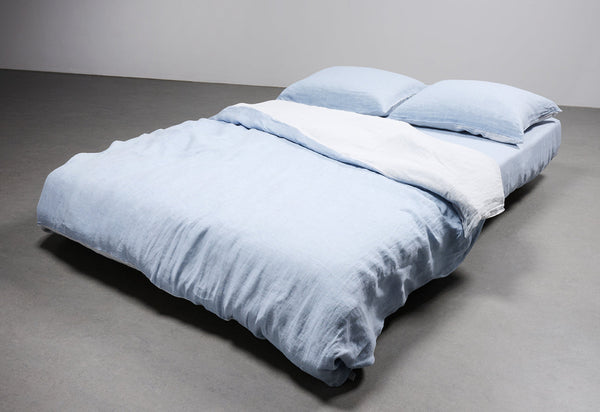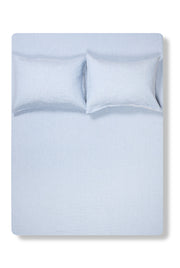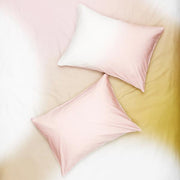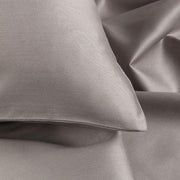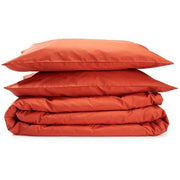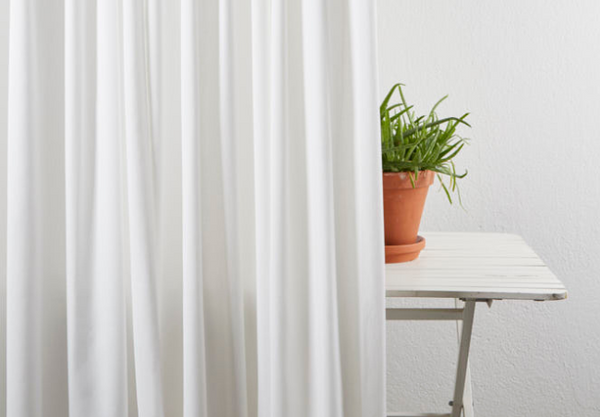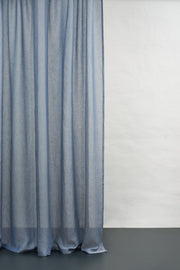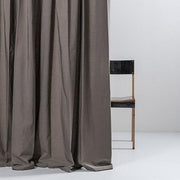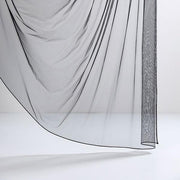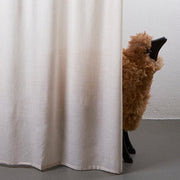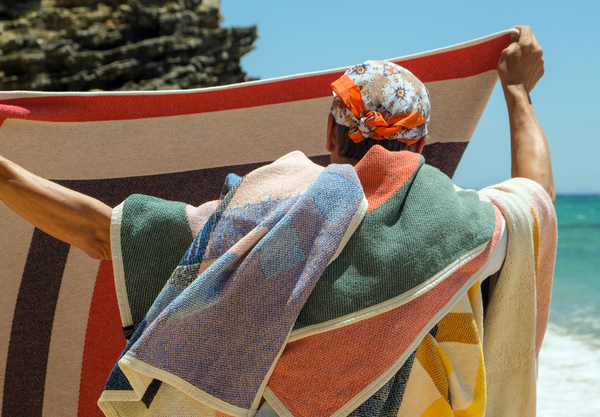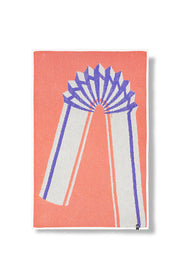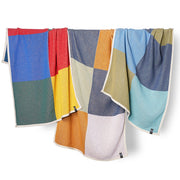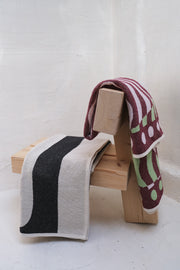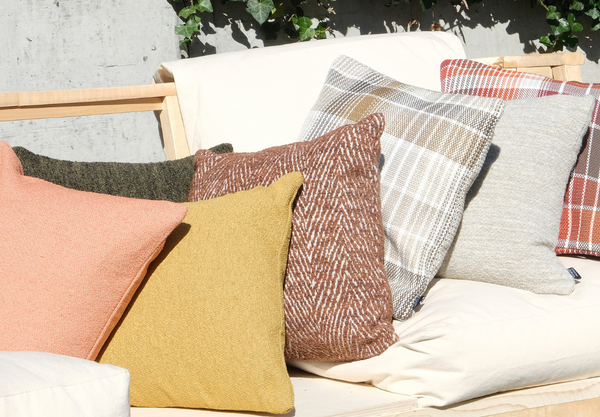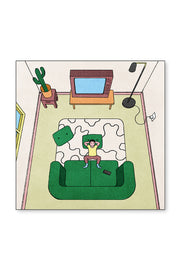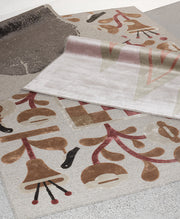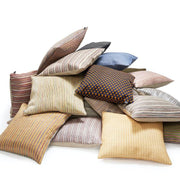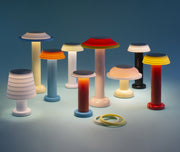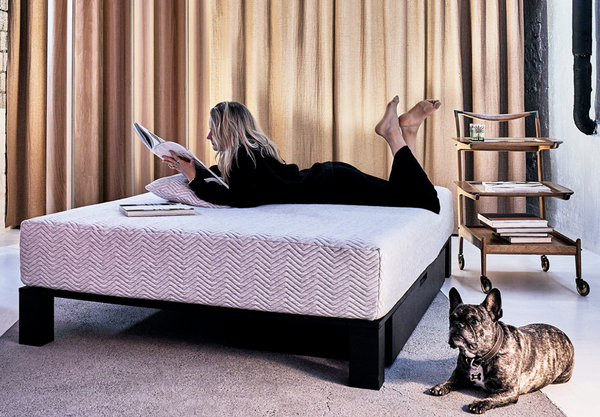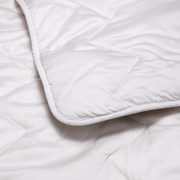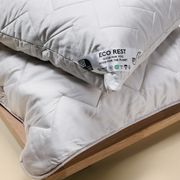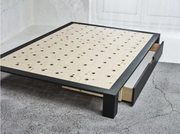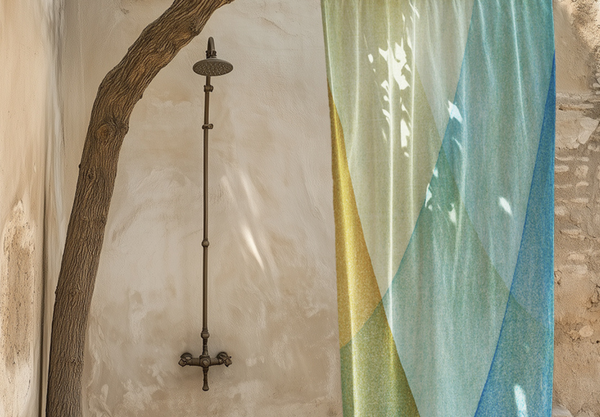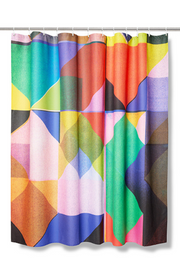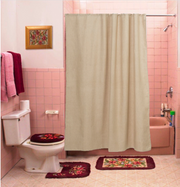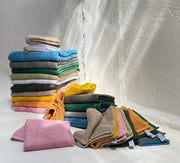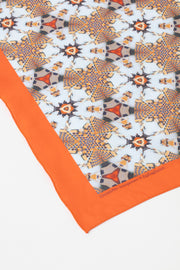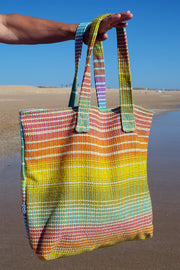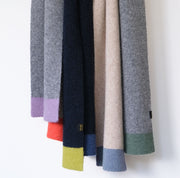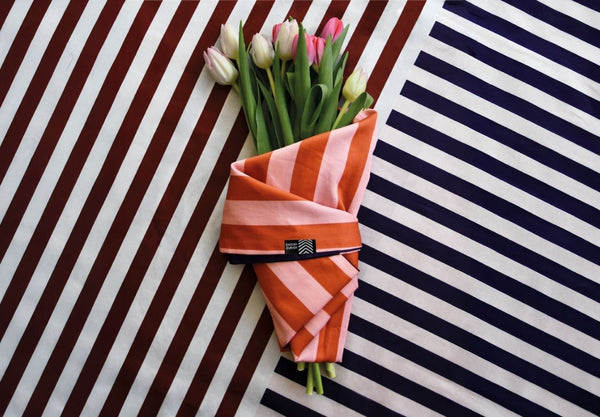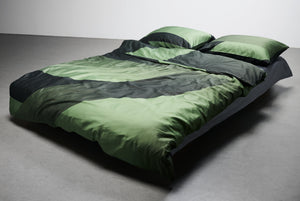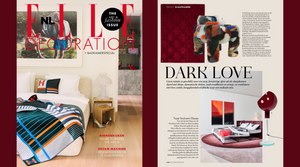Bedding can improve or worsen your sleep experience. Among various materials, cotton bedding is known for its softness and comfort. However, not all cotton is created equal. A wrong choice can leave you tossing and turning, or worse, regretting your investment entirely.
Before you splurge on a new set of sheets, it's worth taking a closer look at what really matters. Here are five things you need to consider to make sure your cotton bedding fits your comfort, lifestyle, and preferences perfectly!
Key Considerations Before Buying Cotton Bedding
As with any purchase, proper research is key to making a smart investment. Before you buy cotton bedding, be sure to consider these important factors first.
1. Understand Different Cotton Types and Fiber Quality
The first thing to consider is that not all cotton bedding is created equal, and, as a material, cotton has different types and fiber quality. In general, the quality of cotton bedding can be determined by several factors, including staple length, thread count, and cotton type.
A staple length refers to the length of individual fibers or strands that make up a cotton yarn. The length of medium staple cotton ranges from 2.2 cm to 2.8 cm. The longer the fibers, the stronger, smoother, and softer the resulting fabric tends to be. That's why Extra-Long Staple (ELS) cotton, such as Egyptian or Pima cotton, is considered more valuable and luxurious.
Different cotton types typically have different fibers and thread counts. Below are some examples of cotton types and their features:
- Egyptian Cotton: With its extra-long fibers (ELS) and high thread count (between 200-400), Egyptian cotton is known for its exceptionally soft texture, durability, and breathability. It's also environmentally friendly and hypoallergenic, but it comes with a higher price compared to other types of cotton.
- Pima Cotton: Quite similar to Egyptian cotton, Pima cotton is also considered to be ELS cotton with high TC, which makes it very soft, smooth, and durable. The difference is that Pima cotton is typically grown in Peru and the US Southwest, while Egyptian cotton is grown in Egypt. Pima cotton that is grown in the US is often trademarked with the name Supima cotton.
- Organic Cotton: Organic cotton is a type of cotton that is grown using methods and materials that are environmentally friendly. This includes minimizing the use of toxic pesticides and chemical fertilizers, and using production systems that maintain soil health and fertility. Because of this, organic cotton is hypoallergenic and good for people with sensitive skin.
- Cashmere-Cotton Blends: As the name suggests, cashmere-cotton blends cashmere, which is known for its softness and warmth, with breathable and durable cotton. This results in a bedding that can be used year-round and has a superior softness that won't irritate the skin.
Pro Tip: When choosing your bedding, don't forget to check for terms like 'Long-Staple' or 'Extra-Long Staple' on the label. You should also pay attention to the percentage of cotton used in the material. For example, ZigZagZurich's Egyptian Cotton Bedding is made from Long-Staple Egyptian cotton, with a 300 - 600 thread count, ensuring maximum comfort and exceptional softness.

Vintage Egyptian Cotton Bedding in Indigo Color
2. Choosing the Right Weave Style
The weave style of cotton bedding can also affect the feel of your sheets and your sleep experience. A cotton weave refers to the way cotton threads are intertwined to create fabric. Different weave styles result in different textures, feels, and durability of a material.
There are three common weave styles, which are:
- Percale: Percale is a cotton weave made using a traditional crisscross technique, with one thread over and one thread over. This results in a crisp, durable fabric with a matte finish, perfect for hot sleepers or warm climates. Percale cotton bedding typically has a minimum 180 thread count.

Pima Cotton Percale Bedding "Burano Stripes" - Sand Stripe
- Sateen: Unlike percale, sateen is woven with three or four threads over and one under, creating a smooth surface that feels soft and silky, with a slight sheen. Sateen bedding typically has around 300-600 thread counts, which makes it heavier and warmer. It is a perfect option for colder climates.

Egyptian Cotton Sateen Bedding in Blue Color
- Twill: A twill weave is characterized by its diagonal look, which is created by weaving threads over and under in a way that steps over one thread at a time. This results in a fabric that is both durable and flexible. Because of the unique weaving technique, twill typically can be made in high thread counts (100-500). It is most commonly used in jeans, tweed, curtains, and bedding.
3. Thread Count
A thread count (TC) is the number of threads woven into a square inch of fabric, both horizontal and vertical. The higher the thread count, the more threads are woven within the fabric, which makes it thicker and denser. In general, a good quality bedding should have at least a 200-thread count, but the sweet spot for a balance of softness and breathability is between 300 and 600. Be cautious with very high thread counts (800+), as they often use multi-ply yarns, which can make the fabric feel heavier and less breathable.
In general, higher thread count doesn't instantly mean better, as higher TC also means heavier bedding.
For a deeper dive, read our article: What is Thread Count: Does it Really Matter for Cotton Bedding?
4. Look for Trusted Certifications
Aside from knowing different weave styles, fiber quality, and types of cotton, knowing legitimate certifications can greatly help you avoid purchasing a product with a quality that doesn't match its claims.
In general, two of the most reputable certifications are GOTS and OEKO-TEX. The Global Organic Textile Standards (GOTS) is a certification that ensures cotton is organically farmed without the use of harmful pesticides or GMOs. It also guarantees compliance with strict environmental and social criteria throughout the production chain, from harvesting to labeling. If you prioritize sustainability and fair labor practices, be sure to pick bedding that is GOTS-certified.
The second certification is OEKO-TEX Standard 100, which focuses on chemical safety. Textiles with this label have been tested for harmful substances and declared safe for human health. The certification also covers every part of the textile product, including threads, buttons, linings, prints, and labels.
Choosing bedding with one or both of these certifications can certainly give you added peace of mind, as there is a solid guarantee that they are produced sustainably and/or aren't treated with harmful substances.
5.Care Requirements for Long-Lasting Bedding
When investing in bedding, consider how much maintenance it requires. In general, cotton bedding is easy to care for, as most is machine-washable and can withstand frequent laundering without losing comfort or durability.
However, delicate materials like cashmere or silk blends may require handwashing or dry-cleaning, which makes them less practical for everyday use.
For a step-by-step guide to keeping your bedding fresh and long-lasting, check out our article: How to Wash Bedding.
ZigZagZurich’s Cotton Bedding Checklist
Before making your final decision, run through this quick checklist to ensure that you are choosing high-quality, long-lasting cotton bedding that suits your lifestyle and preferences:
- Are the fibers long-staple and/or sustainably sourced? Long-staple cotton has exceptional softness, strength, and durability, while organic cotton is grown without the use of harmful chemicals. This makes it better for you and the environment.
-
Does the weave suit my climate?
Choose percale if you prefer a crisp, breathable texture in warmer months, or sateen for a smoother, slightly warmer feel for cooler climates. -
Are certifications listed?
Look for recognized standards like GOTS or OEKO-TEX to ensure your bedding is free from harmful substances and made under ethical conditions. -
Is the thread count between 300-600?
This range is highly preferred for its comfort and breathability without compromising on quality or airflow. -
Can I maintain it easily?
Machine-washable cotton is low-maintenance and ideal for everyday use. Always check care instructions to avoid surprises later.
With this checklist, you can find the right cotton bedding that fits both your comfort needs and values.
Find the Right Cotton Bedding for Your Home on ZigZagZurich!
Cotton bedding is a daily luxury that can make a significant difference in your sleep quality and experience. Therefore, you'll want to choose wisely to enhance sleep and style.
At ZigZagZurich, we simplify luxury. Every product is pre-evaluated against these 5 criteria, so you can shop with confidence. Our Cotton Bedding Collection offers bedding made with the finest cotton, from Egyptian, organic, pima, percale, sateen, and cashmere cotton. These beddings are also OEKO-TEX and GOTS certified (for organic cotton), so you can rest easy knowing they're safe for your skin, kind to the planet, and crafted to last.
Shop our collections now!
